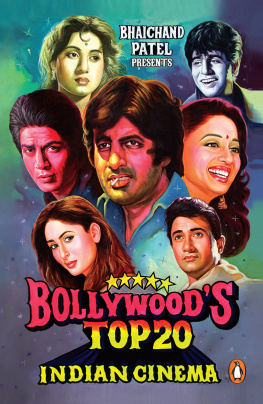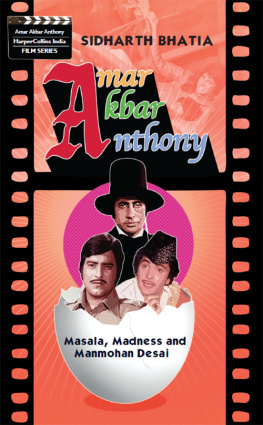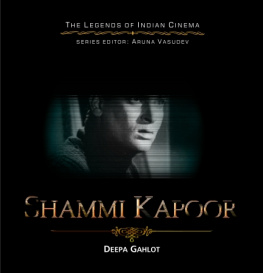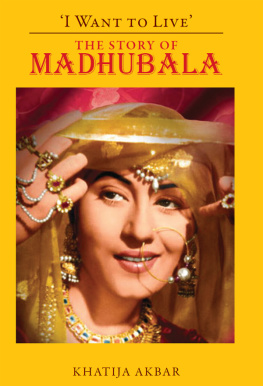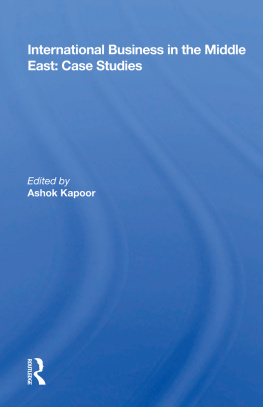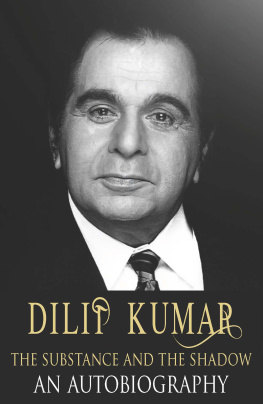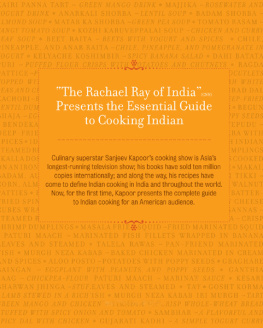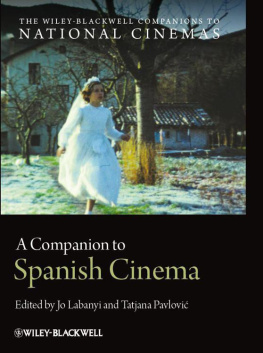Penguin Books is part of the Penguin Random House group of companies whose addresses can be found at global.penguinrandomhouse.com.
This digital edition published in 2016.
This book is sold subject to the condition that it shall not, by way of trade or otherwise, be lent, resold, hired out, or otherwise circulated without the publishers prior consent in any form of binding or cover other than that in which it is published and without a similar condition including this condition being imposed on the subsequent purchaser.
Introduction
The first film I saw was Wadia Movietones Bambaiwali (1941) starring Fearless Nadia. At least thats how I remember it. It was a long time ago, ten years after talkies came to India in 1931. I saw the film, sitting on my mothers lap, in a large tin shed masquerading as a cinema hall. It was a time when it was not wise to invest much money in such places. They tended to burn down since the films that went through projectors were highly inflammable in the early days of cinema.
I come from a family of film buffs. My father was a fan of Zubaida who had the lead in the first talkie, Alam Ara (1931). She was pretty but my fathers fascination may have something to do with the fact that she was the daughter, unacknowledged, of the Nawab of Sachin. Our ancestral village in Gujarat was close to Sachin. My mothers taste ran towards mythologicals, preferably something from Prakash Pictures starring Prem Adib playing Ram and Shobhana Samarth playing Sita. I met Shobhanaji many years later; she was the mother of a close friend. By that time my mother had gone to the big multiplex in the sky but she must have been pleased.
My first English film was Michael Powells The Thief of Baghdad (1940) when it finally reached our theatre. It had a scene of Sabu in a violent storm at sea. That scene scared the shit out of me. My parents should have known better than take a kid my age to such a film but it developed a taste in me for Hollywood before I could understand English.
As a child, I saw an average of three films a week. I had all the time in the world after school. There was little else by way of entertainment in that small faraway country, Fiji Islands. I was not yet into serious reading and, of course, there was no television. The films arrived late by ship. The Hindi films were mostly from Bombay, some from Lahore, Calcutta and Poona. The first film from Madras was Chandralekha (1948), a hugely successful remake of a Tamil extravaganza. As for English films, most of them were from Hollywood with an occasional production from the two British studios, J. Arthur Rank and London Films. They came to us after they were shown all over New Zealand.
We lived a stones throw from a theatre named Lilac. The other theatre in town, Regal, was more posh. It was European-owned and catered largely to a white clientele but we were allowed in. Regal showed films produced by MGM, Twentieth Century Fox, RKO and Paramount studios.
When I came to study in Delhi, I went to the cinema halls on the periphery of the old city since they were closer to the campus. I saw Mother India (1957) and Pyaasa (1957) at the Moti in Chandni Chowk. I went further out to Connaught Place, also by bus, if I wished to see an English film. The Ten Commandments (1956) and Ben Hur (1959) ran at the Odeon. Later in Bombay, I took the local train from Churchgate to the seedy screens on Grant Road and Lamington Road. Some of these halls surely must have become victims of the multiplexes by now.
I have to confess there is a gap in my enjoyment of Hindi films. For five years from early 1961 I was in London. This was before Indians, Pakistanis and Uganda Asians invaded Britain in large numbers. There was only one theatre, a disused opera house off Tottenham Court Road, where Hindi films were occasionally screened on Sundays. I saw only four films from India in those yearsa revival of Baiju Bawra (1952, one of my all-time favourites), Dharmaputra (1961, an awful Yash Chopra film), Prem Patra (1962, Bimal Roys worst film) and Guru Dutts classic Sahib Bibi Aur Ghulam (1962, which was some consolation).
Be that as it may, I hope I have somewhat established my credentials for editing a book that encompasses eighty years of Indian cinema. So lets get down to the nitty-gritty. This book is a celebration of Hindi films or, if you prefer, Hindustani films, from the introduction of sound in 1931 to the present day. We are covering these eight decades through twenty stars, the brightest, and often the best, men and women who gave us so much pleasure over the years.
Choosing the title of this book was not easy. There was considerable debate on the wisdom of using the word Bollywood. The moniker was coined sometime in the early 1980s and no one knows for sure who the culprit was. But it has stuck. We are aware that there are some in the film business who dislike the use of the word. They have a point: it is derivative, a nod to the word Hollywood. But there are others who are quite comfortable with the word. We were wavering until Shekhar Kapur and Rakeysh Mehra made a documentary titled

